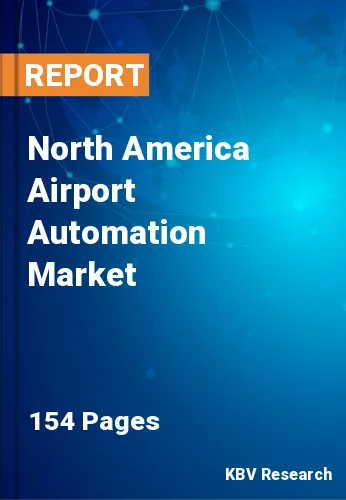The North America Airport Automation Market would witness market growth of 5.6% CAGR during the forecast period (2023-2030).
Collaborative decision-making platforms, integral to airport operations, extend their influence on air traffic management. These platforms serve as communication hubs, facilitating real-time coordination and information exchange between air traffic controllers, airlines, and other stakeholders. By providing a unified view of airspace conditions and flight schedules, these platforms contribute to more informed decision-making, enabling the seamless flow of air traffic while minimizing delays and disruptions.
Moreover, the complexity of airport operations demands collaborative decision-making platforms that facilitate real-time communication and coordination among various stakeholders. These platforms integrate data from diverse sources, including airlines, ground handlers, and air traffic control, enabling airports to make informed decisions that optimize resource utilization, enhance efficiency, and minimize disruptions. Resource optimization is a core objective of collaborative decision-making platforms. By having a real-time understanding of flight schedules, passenger loads, and ground operations, airports can allocate resources such as gates, check-in counters, and ground support equipment more efficiently. This optimization improves operational efficiency and contributes to cost savings and a more sustainable use of airport resources.
The expanding airport sector indicates increasing air travel demand in the United States. To efficiently handle the growing passenger volumes, airports may invest in automation technologies such as self-service kiosks, automated check-in systems, and biometric authentication to streamline passenger processes. Likewise, airports in the United States may adopt digital technologies for passenger services, smart airport management systems, and automation solutions that contribute to a seamless and connected travel experience. Thus, the rising airport and aerospace sectors in North America will assist in the expansion of the regional market.
The US market dominated the North America Airport Automation Market by Country in 2022, and would continue to be a dominant market till 2030; thereby, achieving a market value of $3,936.6 million by 2030. The Canada market is showcasing a CAGR of 8% during (2023 - 2030). Additionally, The Mexico market would register a CAGR of 7.1% during (2023 - 2030).
Free Valuable Insights: The Airport Automation Market is Predict to reach USD 16 Billion by 2030, at a CAGR of 6.2%
Based on Airport Side, the market is segmented into Land Side and Air Side. Based on Automation Level, the market is segmented into Level 3.0, Level 2.0, Level 1.0, and Level 4.0. Based on System, the market is segmented into Automation & Control, Data Acquisition & Communication, Software & Solution and Data Storage. Based on End Market, the market is segmented into Greenfield and Brownfield. Based on Application, the market is segmented into Baggage Handling & Tracking, Air Traffic Management, Passenger Service & Assistance, Ground Transportation & Parking, Facility Management, Emergency Response & Safety, Airfield Management, Ground Support Equipment and Retail, Dinning & Others. Based on countries, the market is segmented into U.S., Mexico, Canada, and Rest of North America.
By Airport Side
By Automation Level
By System
By End Market
By Application
By Country
Our team of dedicated experts can provide you with attractive expansion opportunities for your business.

